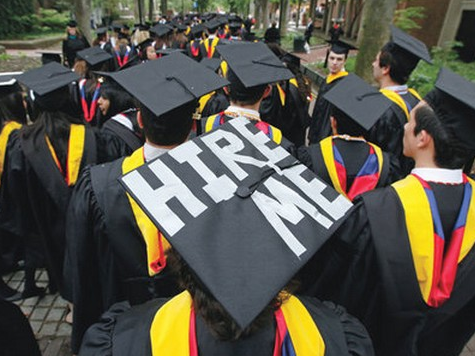Gov. Jerry Brown raised eyebrows recently when he dismissed concerns about California’s tough economic environment, which has chased companies like Toyota away: “[S]mart people figure out how to make it,” he said. An increasing number of elite graduates from across the country seem to agree, with New York quickly losing its place to the Bay Area as the prime post-graduation destination for graduates from elite colleges.
The New York Times recently dubbed Stanford University–at the heart of Silicon Valley–as America’s new “it” school, replacing Harvard at the top of the heap, if not yet the official rankings. The reason: Stanford’s focus on engineering, which Ivy League schools like Harvard have long neglected in favor of economics. For twenty years, defying the dot-com boom of the 1990s, that was a safe bet, as graduates flocked to New York and D.C.
No longer. The latest tech boom–exceeding the frenzy of the 1990s by some measures–has graduates looking past Wall Street and Washington to the West Coast. After the Fed-fueled stock market surge and the Bush-Obama boom around the nation’s capital, there is a sense that the best future opportunities lie in technology–if not engineering itself, then in venture capital, consulting, and legal work for the startup successes of tomorrow.
At Harvard reunions this weekend, the talk was about how new graduates were choosing San Francisco as their first port of call–and how alumni were picking up stakes to travel west, braving the high cost of living, the high taxes and the restrictive regulatory environment. Bill de Blasio’s socialist New York is no longer quite the draw, and the terrible winter of 2013-4 has, no doubt, had an effect. Whatever the reasons, the shift is undeniable.
The irony is that hundreds of thousands of Californians are moving in the opposite direction–leaving the state, not for the East Coast but for Texas and other western states with more affordable housing prices and business-friendly environments. Beyond the elite bubbles of high-tech and finance, the outlook in California remains very challenging. In Southern California, media and high-tech are also booming–but aerospace and film are dying.
California is becoming an increasingly bifurcated state, in which the middle class is hollowing out, while elites flourish and a dependent underclass continues to grow. Those elites often vote to tax themselves even further, and expand government services more generously, creating new barriers to growth and opportunity, even if out of a misplaced sense of altruism. It may not be sustainable–and it is encountering increasing populist protest.
Yet it is a model that is winning praise, particularly from the left-wing media, which sees Brown’s model as the alternative to Scott Walker’s brand of reform in Wisconsin. As long as you can convince the public to raise taxes, John Nichols notes approvingly in The Nation, you can avoid having to reform public sector unions. That may sound short-sighted to anyone who understands public finance and California’s massive long-term challenges.
Yet it sounds like a fair deal to those inclined to believe–or hope–that they will personally be able to afford more than their share of the state’s lingering burdens. And with the Obama presidency already in its waning years, and with mixed forecasts clouding Wall Street’s horizons, the nation’s top graduates are eyeing Silicon Valley–and the massive acquisitions of recent months–with a renewed sense of adventure and anticipation.

COMMENTS
Please let us know if you're having issues with commenting.